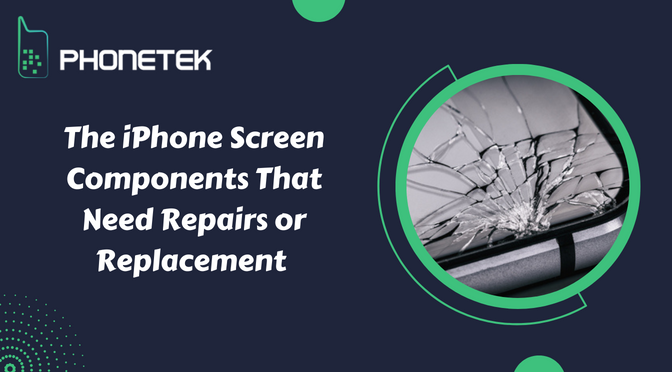Damaged or cracked screens are one of the most common issues encountered by iPhone users. Depending on the extent of damage they either continue using the gadget (something that we never recommend unless the cracks or the damage is really superficial) or they take their phone to their nearest phone repair store offering iPhone repairs in Chullora to have the screen replaced or repaired.
But how many users would ever take stock of the constituents that the screen of an iPhone is made up of? How many end users ever think of the layers of the screen that are particularly damaged, and need repair or replacement? Very few – at the most. Thus, on this page let us discuss the various layers that the iPhone screen is made up of and the precise damage they encounter in the event of a screen damage.
LCD or Liquid Crystal Display: Technically speaking, Liquid Crystal Displays (LCDs) are a display of pixels that are interconnected with the help of an electrical current, which adjusts the colour and resolution of each pixel.
While LCD is a more conventional route, some phones would use LED or Light Emitting Diode back lights that save power as well as space. When the protective glass is damaged severely, this layer is also affected, needing a replacement or repair by the experts offering iPhone screen replacement in Chullora.
Protective Glass: As the name suggests, it is the outermost protective layer of the screen of an iPhone. The composition of this glass is different from the conventional glass. This is an especially-fabricated aluminosilicate glass, which is commonly termed as Gorilla glass. The glass is manufactured to provide resistance to damage and scratches.
However, when the blow to the glass surpasses its endurance level the glass breaks or cracks. This exposes the inner layers to damage or dust & dirt. Thus, it is advised that the users get to their nearest store that conducts iPhone screen repair in Chullora for a fast replacement of this glass when it is damaged.
Wire Grids or Capacitive Touch Screen: Just beneath the protective glass, there lies a meshwork or grid of extremely minute wires that forms an electrical field across the iPhone’s screen space. The touch of the users’ finger is interpreted by this wire grid as an interruption or break in this electrical field. These interruptions or breaks indicate to the iOS about the activity that is taking place and the phenomenon is considered by the iOS as a ‘tap’ or command.
This Capacitive Touch Screen (CTC) is so sensitive and accurate that it reacts to even a feather touch of the human finger or something similar. The CTC is intimately embedded in the upper and the lower layers. Hence, if there is any substantial damage to the upper layer or any water or other liquid damage it severely affects the functionality of the electrical field and that of the screen as a whole.
The user needs to immediately get the device to the technicians offering iPhone screen replacement in Greenacre for repair or replacement of the upper screen as well as the CTC.
Now there are specific symptoms shown by respective layers of the screen when they are damaged. We shall discuss them in a subsequent blog. As of now, we hope you understand the gravity of the situation that the screen of your iPhone faces when it gets damaged.
So do not delay. Just get your phone to us at Phonetek if you are in and around Sydney at the earliest if your iPhone screen is damaged. Call us at 02 9742 6411 to book a service call, or email us at info@phonetek.com.au to know more about us.







